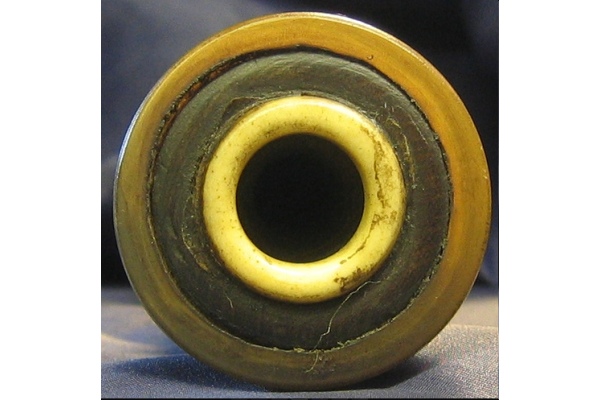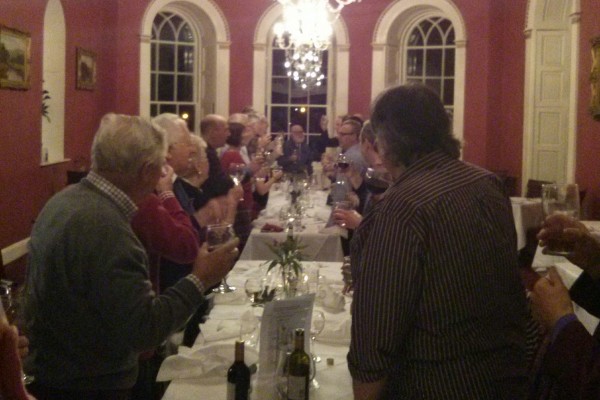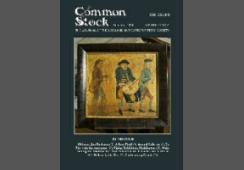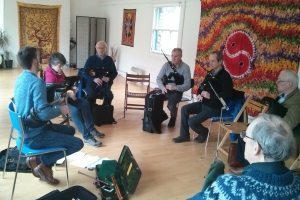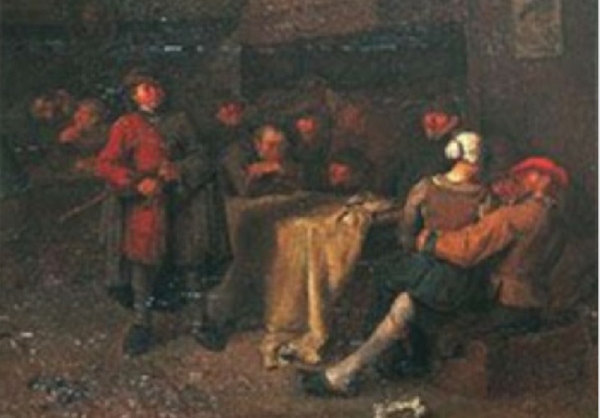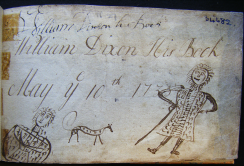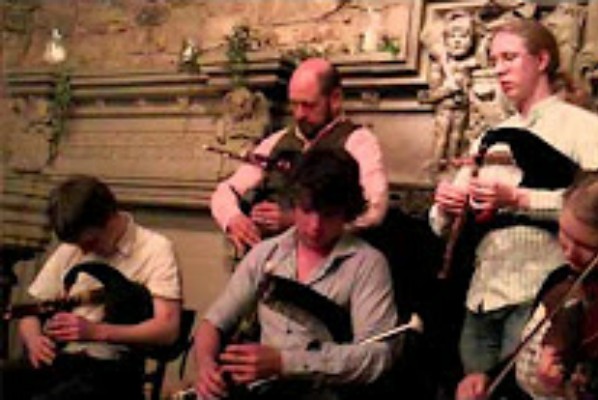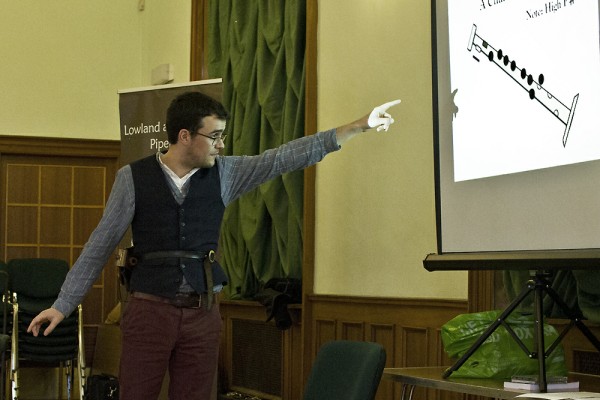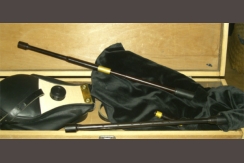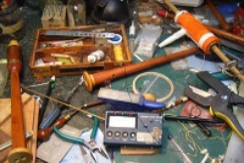Pete Stewart reports on the workshop he gave at the Peebles Collogue
A week or two prior to the Collogue weekend I had made available three tunes for those who were considering attending the workshop. These three tunes were examples of three different types of Lowland music, distinguished by their rhythms but otherwise sharing particular characteristics. At the beginning of the workshop I offered to concentrate on just one of these types, and the class chose what I called in the handouts ‘The Hornpipe’ but which was identified in the class as ‘6/4 tunes’.
The point of this workshop, as of others I have done in the past, is not to teach one or two tunes but to explore how tunes of any type might be played; in this case those that appear in the sources as if they should have a 6/4 time signature, although most of the sources will have no time-signature at all, or at best a plan ‘3’, a sign that covers a multitude of possibilities. The method I adopt is to provide examples of those sources that give us some indication of how to approach this type of tune.
A handout was circulated which contained a number of excerpts of tunes selected for the way in which they reveal (or conceal) clues to interpretation, not just of tempo, though this is vital, but also something more complex, which I have taken to calling ‘Dird’. By this I mean the internal rhythmic engine that drives not just the music but also the physical expression, most readily experienced in dance, but which a piper must also have internalized if they are to do justice to the music.
Here is the first example we looked at 'Cruds and Cream'. The tune appears with this title in the William Vickers manuscript but this version is taken from the LBPS ‘Pink Book’:

I imagine that most will have little trouble with assessing how to play this; it looks like standard ‘Jig’. (I should point out that the Pink Book version has a few errors, and were we exploring the way these tunes are ‘structured’ in any detail this would be crucial; however, for our purposes we will overlook these errors}. The class then played through this tune, treating it as a standard 6/8 jig.
We then went on to look at an example from earlier in the century, John Young’s bizarrely-named ‘Wherefore Come ye Here I’se Warrant’.

It was tunes such as this that I imagine were in the minds of those who requested that we look at tunes in 6/4 , chiefly, I suspect, because it is the time-signature itself that is a deterrent to understanding. If we were to be presented with the same tune written with a 6/8 time-signature, would it have the same deterring effect? (We didn’t do this exercise in the class but here it is.)

Again, this looks like we can treat it as a straightforward 6/8 Jig. What evidence is there that we should do otherwise, apart perhaps from the suggestion that has been made elsewhere that the 6/4 time signature suggests, almost subliminally but perhaps historically too, a slower tempo? (though certainly not ‘half-speed’).
Before going on to consider that, I was asked why I had chosen to call these tunes, contrary to convention, ‘hornpipes’. To answer this question I introduced the ‘Scots Hunt’s Up’ tune that is printed in this issue on page 35. In fact, this tune also contains clues to the first question regarding the interpretation of these tunes.
This is the final part of the extended composition which I have suggested before displays the groundwork of subsequent Scots music form, the ‘Scotch hunt’s Up’ that appears in the lute manuscript of Matthew Holmes, around 1595. Again, like the John Young tune, when written out in 6/8 (which, of course, the original is not - like most lute tablature of the time it has no time signature at all, only relative note-values.(A modern transcription of the original was printed in Common Stock for June 2015.) Nor does it seem in any way to justify the genre ‘hornpipe’. Not, that is until we consider an even earlier source:

This is a transcription from Guillaume de Morlaye’s 2nd Guitar Book, published in 1552; it is titled ‘Hornepipe d’Angleterre’. When we played through this tune as if it were a 6/8 jig it was fairly clear that something else was involved here that was outside of the usual concept of the ‘Jig’ This became more obvious when we returned to John Young’s tune: in 6/8 the second strain looks like this:

And in 6/4, as in the original, like this:

So the question arises, what is it that is different here, that puts these tunes in a separate genre from ‘Jigs’? For the answer, we turned to another group of tunes, one which eventually will take us back to the tune we started with. First, we looked at the tune titled ‘Wot ye what I got late yestreen’, one of the bagpipe tunes in George Skene’s 1717 manuscript. Firstly, two strains (strains 2 & 4) that have all the characteristics of a straight 6/8 jig (and Skene’s MS does indeed have the 6/8 time-signature). Skene’ key signature of one #, ie. C naturals is crucial in performance but for our current purposes we can play C#’s.

And then the opening strains (1-3):

What is important here? Let’s consider the first full bar; we have two groups of three quaver/quarter notes. The first group are all quavers, as would be normal in a jig. The second group however, is divided up in a way that would be most unusual in, if not absent from, a normal jig. The way in which that second of three is divided into semi-quavers determines the whole characteristic of this type of tune. It takes us back to Morlaye’s 1552 hornpipe. Instead of the usual Jig rhythm, which I characterise as ‘Humpty-dumpty’ we have a new internal rhythm, a new dird. In the class we explored the feeling of this dird by ‘clapping’, or beating it out on our knees, 1- 2& -3, discovering that its basis was the emphasis on all three of the ‘sub-beats’, rather than the normal Jig 1 – 3|1 - 3 rhythm. For those lost souls who have experience of French dance, this is the characteristic dird of the three-time Bourée. Armed with this insight, we returned to John Young’s tune and explored it as played with this dird, feeling the value of each of the crotchet notes in the 6/4 setting.
This idea of ‘feeling’ the dird I want to stress as being a vital part of the interpretation process. It seems to me that this is an aspect of performance teaching that is often neglected, possibly because the ‘feeling’ of the most familiar types of tunes, especially for GHB players, is already internalised. Exploring different kinds of internal rhythm, of dird, requires re-programming this experience. I describe this as the need to prime a different kind of mental ‘engine’, something that has to be set running, not just in the mind but in the body of the player in order to uncover the nature of this music.
Before we go on to the final tune, here is the full 8 strains of Skene’s tune, followed [on the next page] by a tune that comes from a manuscript in the National Library of Scotland, dated around 1760; the tune is called ‘Sowens and Sour Milk’; perhaps you can see a relationship between this and the first tune we looked at, Vickers’ ‘Curds and Cream’ (apart from the title);. It can also be identified as a distant variant of Skene’s tune, as well as being a later variant of the tune that appears in Henry Atkinson’s 1695 manuscript, ‘Crudds and Whey’. Should you be wondering how these tunes got two very different titles, you might well consider a line from Robson’s ‘Northumbrian Minstrel’s Budget’, a poem cleverly constructed from a multitude of song titles, one of which is ‘And I got yesternight Curds and Whey –’

Sowens and Sour Milk (from NLS MS Adv.2.25.2, c.1760)
And so to the final tune in this ‘Hornpipe’ class, Dicke’s Away (William Dixon Manuscript, 1733), a piece that seems to demand that we approach it in this way.

